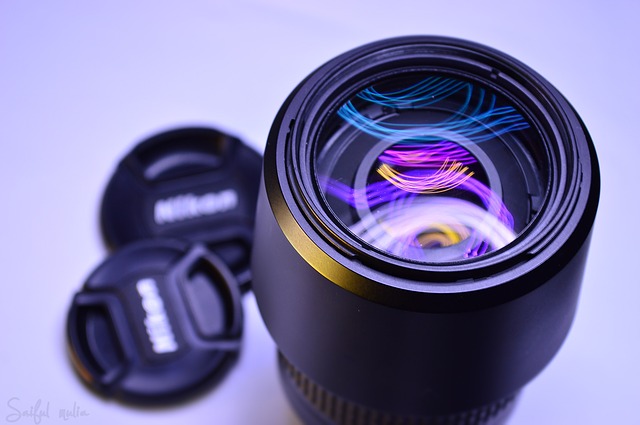When you mention Africa, the first image you envision in your mind is the amazing wildlife and the Big 5, and an unsurpassed safari experience. For wildlife lovers, the African continent is a haven where they can get the chance to spot the famous “Big Five”, which are the five large dangerous species, namely leopard, rhino, African buffalo, lion, and elephant.
Everyone needs to experience the magic of Africa which touches the soul and the experience stays with you the whole life. Every vacationer comes here with the hope of capturing some amazing wildlife scenes. However, not everyone is blessed with professional wildlife photography skills who seem to capture extraordinary wildlife photos. Before booking an all-inclusive African safari experience, get some info on how to photograph the amazing wildlife in Africa.
Those amazing portraits of the rich wildlife indeed leave one wondering. What is it about the picture that makes it amazing? Is it the subject itself, the setting, a special expression, or a combination of all? We can all have discussions and opinions but can never have a clear answer on what makes that wildlife shot simply awesome and perfect.
Wildlife photography experts have some tips to share with all the beginners and experienced with wildlife photos and here is what they have to say.

Photo by Jean van der Meulen from Pexels
Tips to Photograph the Big 5 in Africa
Start with equipment that you understand
The first and foremost tip given by the experts is to buy camera equipment that you truly understand and are well familiar with. Practice the camera operations to understand the motion and anti-motion, its landscape function, the zoom range, aperture and shutter speed, and so on. Try to imagine the lighting conditions and try to perfect your technique. Time spent with your camera and all those efforts will pay off when you are actually on the field.
The lenses and shutter speed
To get some really good shots, you should invest in good-quality lenses with certain specifications. For example, a good starting point would be a lens with a 300mm focal length for wildlife and a 500mm lens for bird photography. Ideally, you should have two cameras with you as changing lenses can be time-consuming and you might miss out on the action. Use a shutter speed of at least 1/125 when the subject is in motion. There is no need to buy large and bulky photo lenses, as they can be cumbersome to carry and spoil your safari experience.

Photo by Iurii Ivashchenko from Pexels
Added gear and support
Always bring a tripod for steady support and you can always use the camera for panning, following action, and moving around for different positions. Make sure to buy a camera that comes with a quiet shutter sound, as you will not want those beautiful animals distracted by any sounds and spoil the shot. It is a good idea to carry an extra small and lightweight automatic camera for convenience. Many photographers also carry a beanbag to protect their cameras. Do not forget to bring a flash for night safari photography.
Sometimes, camera bodies and lenses can be very expensive for many people; however, Keh is a great option to get a used one at a reasonable price. Read the full review here.
Enough memory and storage
Make sure that your camera is ready to take photos and placed in the best settings to adapt to the current lighting situation. Carry enough memory cards for extra storage as you will need that for action photography. Nothing is more frustrating to learn that you have run out of memory or have to change the settings in the middle of a great shot. You should also have an external drive as a backup.

Study the behaviors of the animals
Before you get on the flight, spend some time learning about the behaviors of the Big 5. Many professional photographers know the precise behaviors of these animals and can predict their actions. Once you have all that info, you can apply your knowledge and know when and where or what kind of terrain you can have a better chance to find those amazing animals and get some great pictures.
Shoot early morning and late afternoon
When on a photographic safari, the best time to take a photo is either early in the morning or late in the afternoon. This is because the animals are most active during these time frames and natural light is at its best and with the sun low in the sky, what you get is the most beautiful lighting. Take cues from professional photographers and be patient if you want to take lots of shots. Expert photographers often take hundreds of photos before they can get that perfect shot.

Photo by Antony Trivet from Pexels
Keep yourself safe at all times
It would be a grave mistake to put yourself in danger to take a better photo of the wildlife. After all, it is never easy to predict the behaviors of wild animals and especially the Big 5s. You can easily get some great shots from right within your vehicle as the animals are used to the presence of vehicles. Hence, there is no need to step out of it to get closer to the animal as you would only be putting yourself in danger.
How to Take Good Photos of Wildlife
Along with carrying a good quality camera and equipment, you should be aware of some basic rules of photography.
- Vary the angles and perspectives when photographing wildlife. It can be tempting to zoom in on the Big 5s but sometimes things get more interesting in the bigger setting.
- Focus on the eyes of the animals when photographing wildlife because if the eyes come out clear and sharp, it makes the animal stand out and creates an engaging photo.
- Set your camera on manual by focusing on the subject and making the background a bit blurry. Use a wider aperture to create a dramatic effect and emphasize the subject with close-up details.
- Use the rule of thirds when constituting the picture and avoid centering all your shots as it will only create a lifeless composition. It is a good idea to leave some space around the animal where it can move into.
- Avoid zooming in and out too quickly or holding the camera unsteadily. Learn to sit or steadily and give your camera solid support when shooting.
You are definitely here for the Big 5s but it would be a mistake to ignore the smaller animals when on a safari. So, go ahead and photograph small animals, dung beetles, or colorful birds as the experience is highly rewarding as well. Meet the local tribes and spend some time interacting with them and learn about their culture and customs. Build a rapport with them and always be courteous and take their permission before taking pictures.
Taking photographs on safari is indeed great fun and a lifetime experience, but it is a good idea to put down the camera once in a while and take in the amazing views of the African landscape, its sounds, and smells.

Photo by Wayne Jackson from Pexels
Related posts
Wildlife Photography Tips and Techniques
Best Nikon Camera for Wildlife Photography
Optics on Safari – 10 of the Best Canon Lenses for Wildlife Photography
Thanks for reading, I hope you enjoyed the article, in case you have any questions just drop them below & I will be happy to answer you.
The featured Photo by Frans Van Heerden from Pexels
If you enjoy the site, don’t forget to subscribe, we will only inform you when a new article is posted.










Lot of thanks. I appreciate your knowledge. Thank you for sharing such a informative content
Congratulations on your excellent job! I like your photographs and look forward to seeing your new work each week!
Thanks Lisa!